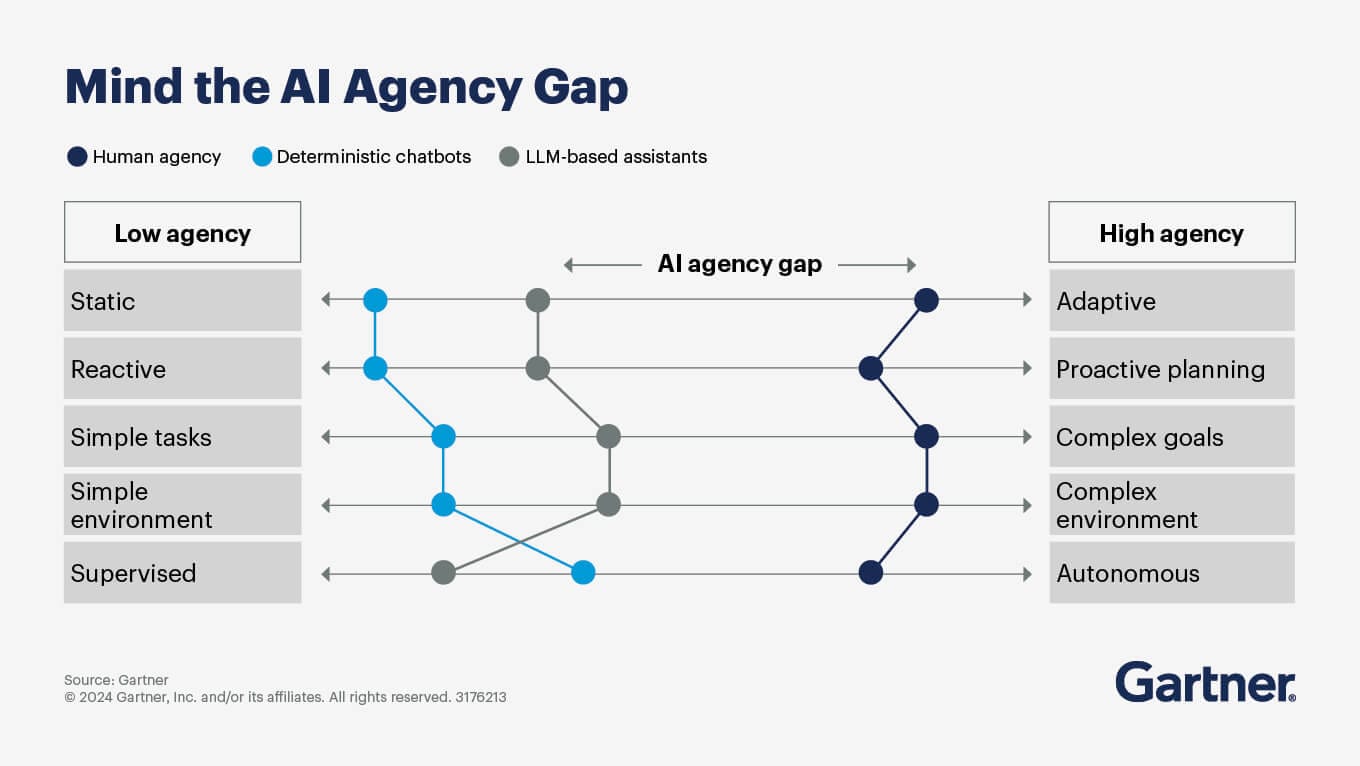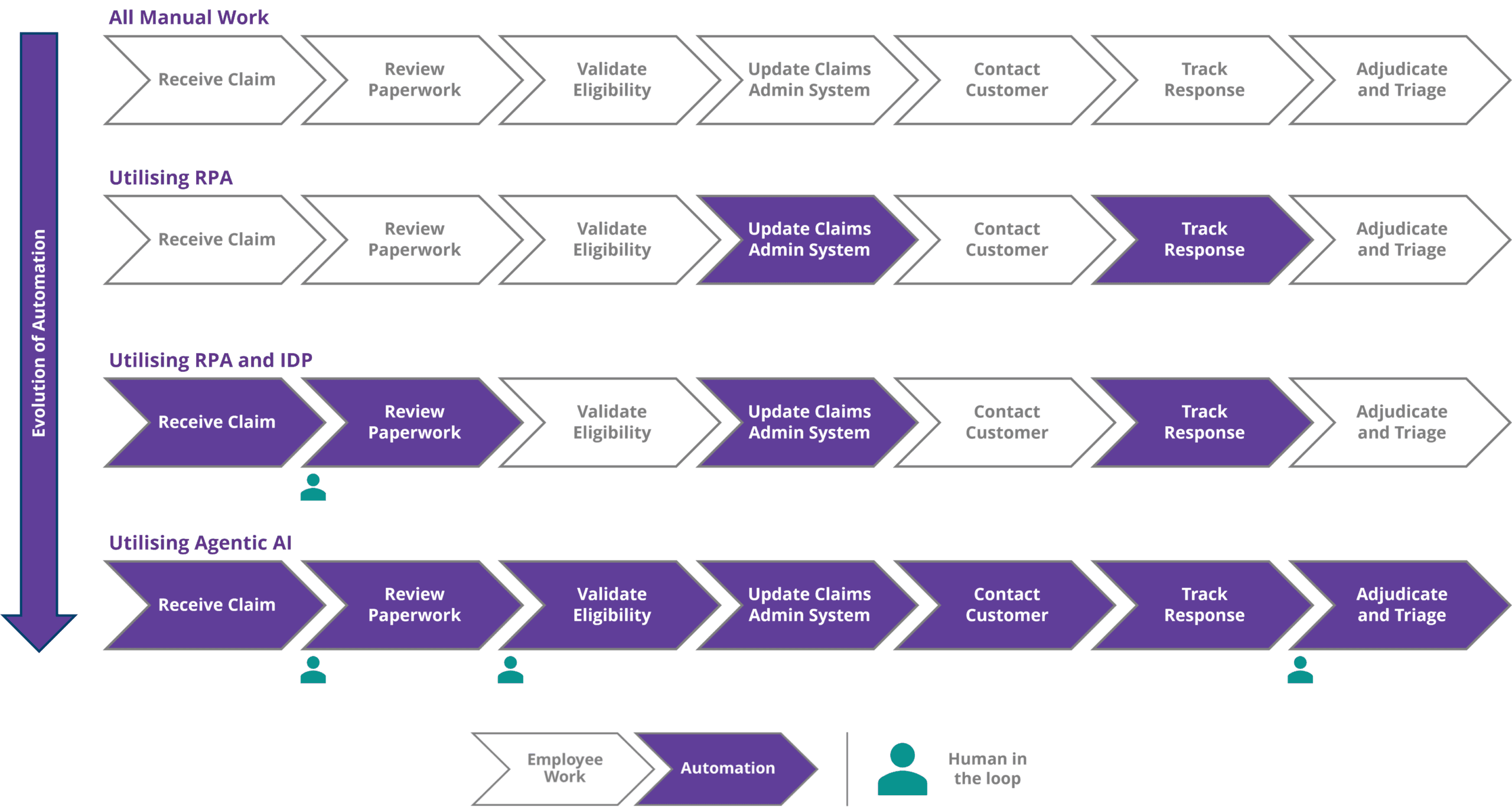Deciding your agentic AI use case

Agentic AI is transforming the way businesses operate, offering unparalleled opportunities to enhance efficiency, innovate processes, and maintain a competitive edge.
Across industries, from finance and healthcare to retail and beyond, organisations are adopting this technology at an unprecedented pace. By creating AI agents that continuously and autonomously understand, learn, and take action to complete complex workflows, your teams can focus on strategic decision-making.
However, this rapid adoption comes with significant risks. Poor planning, a lack of foundational trust, and fragmented strategies result in ineffective pilot programs that fall short of expectations. These missteps can erode confidence among users and senior stakeholders, who may grow reluctant to dedicate further resources to AI initiatives.
Companies seeking to leverage agentic AI must tread carefully, balancing innovation with disciplined planning to ensure success and avoid costly pitfalls. That’s why we’re here to help you determine the foundational use case that aligns best with your strategic objectives and operational needs.
The AI agency gap
When we discuss ‘workforce automation’, many organisations consider chatbots or bots designed to complete manual tasks with a narrow field of data (e.g. moving customer data from one field to another). These have improved workflow efficiency, but still require human interaction to initiate processes and deal with anomalies outside of the bot’s set of rules.
Consider invoice processing – a bot may be designed to review and process the invoice, but it can only raise an issue with a ‘human in the loop’ who then must investigate what’s happened.
Agentic AI is the next step in automation. In the example of invoice processing, the AI agent is able to not only process the invoice but also handle disputes, reviewing them against policies or legislation and resolving them. It’s all about closing what Gartner calls ‘the AI agency gap’.
Agentic AI is a move towards adaptive, proactive agents who can complete complex tasks and make decisions 24/7 while continuously improving its understanding and reasoning.

Source: Gartner
Agentic AI’s utilisation above other automation technology such as Robotic Process Automation and Intelligent Document Processing can be seen in the graphic below. Here, a complex workflow of processing insurance claims is broken down into its component stages and mapped to each respective level of automation technology. As you can see, humans can remain in the loop to act upon an agent’s recommendations at different stages.

Understanding the AI agency gap and how you can map out a process into distinct steps will help you decide which processes to consider as a use case for agentic AI. As you can see, agentic AI can be implemented to automate whole workflows so decisions are made autonomously by your agents (with humans in the loop when deemed essential). Of course, the above is just one example – your own processes may be similar but have infrastructure limitations based on any legacy systems you may still be relying on.
Deciding your agentic AI use case
Agentic AI has the power to revolutionise your organisation, but like all transformative technology, rushing to implement it can lead to botched projects and leave senior stakeholders disillusioned – unwilling to commit to the next pilot or proof of concept due to past failures.
We believe there are two fundamental use cases:
- Accelerating an internal business process
- Improving a user, customer, or supplier-touching process
Both of these have their own level of risk and ways to quantify return on investment. While many organisations rush to ‘automate away’ their biggest problems or ‘10X’ profitable services, your initiative must start by deciding which use case your agentic AI program is rooted in.
Accelerating an internal process
This use case focuses on back-end processes integral to your organisation, giving AI the autonomy to interpret data, produce reports, and make decisions that will benefit your organisation.
Agentic AI excels at managing and analysing vast volumes of data with unparalleled speed and precision, transforming the efficiency of back-end operations. By automating data aggregation, pattern recognition, and predictive analysis, it eliminates bottlenecks associated with manual processing, enabling faster and more informed decision-making. This application of agentic AI can not only be measured numerically (for example, in number of hours saved) but can also deliver senior stakeholders new insights and solve problems in new ways:
- Retail: Stock forecasting – AI makes stock forecasting easier and more accurate than ever by analysing demand patterns in real time. This enables faster inventory decisions, reducing overstocking or shortages, and streamlining supply chain operations.
- Healthcare: Trial data processing – AI expedites trial data processing by automating data entry and analysis, reducing errors, and accelerating insights. Researchers can focus on groundbreaking treatments rather than administrative burdens.
- Insurance: Risk modelling – Agentic AI refines risk modelling with predictive analytics, accelerating analysis while improving precision. This allows actions to be taken immediately, rather than waiting for a team to ‘accept’ or ‘approve’ an action that requires an immediate decision.
- Legal: Regulatory reporting: AI simplifies regulatory reporting by automating document compilation and compliance checks. This ensures accuracy, reduces delays, and means your process can continuously adapt to changing legislation without elongating manual review processes.
Improving a user-touching process
This use case focuses on your end users, customers, or suppliers, simplifying or expanding how they engage with your organisation while ensuring a positive user experience.
Agentic AI enhances customer experience by delivering faster, seamless, and personalised interactions across every touchpoint. By providing high-quality support and allowing agents to quickly make decisions that assist customers, agentic AI ensures that users feel valued and understood 24/7. Its ability to adapt responses dynamically and anticipate needs creates a sense of proactivity, building trust and satisfaction, improving your organisation’s customer relationships and helping you stay competitive. There are possibilities for agentic AI to play a pivotal role in user-touching processes:
- Retail: Product recommendations – AI enables personalised product recommendations by analysing user preferences and behaviour, creating tailored shopping experiences that improve satisfaction and drive higher engagement and conversions.
- Legal: Case progression updates – Case progression is ripe for agentic AI implementation as clients are provided with an agent who can provide updates and notifications 24/7, keeping them informed efficiently and improving their trust and satisfaction in legal processes.
- Public sector: Citizen services – Agentic AI can streamline citizen services by accelerating responses and providing real-time updates, ensuring faster resolutions and creating a more transparent, user-friendly experience for individuals interacting with public systems.
- Healthcare: Symptom recognition – AI improves symptom recognition through intelligent analysis of patient inputs, providing quicker insights to guide users toward appropriate care. This can also reduce doctor caseload to only include more serious cases.

Essential pillars of agentic AI success
Agentic AI represents a groundbreaking advancement, redefining the potential of technology by enabling autonomous decision-making and action.
However, as automation moves beyond simple rules-based processes, the demand for quality and accountability has never been greater. The success of agentic AI depends on a strong foundation built upon three essential elements: quality data, robust guardrails, and clear explainability. Embedding these pillars into your design and deployment processes will ensure your AI applications deliver meaningful, measurable impact.
Guardrails
Robust guardrails are essential for ensuring agentic AI operates within predefined boundaries, minimising risks and aligning its actions with ethical, legal, and organisational standards. Agentic AI is a sizable leap in the autonomy of automation technology – which means safeguards to prevent unintended actions are more important than ever to both enhance system reliability and protect user trust.
Quality data
Quality data ensures accurate decision-making and reliable outcomes. Poor data quality can introduce biases, reduce performance, and erode confidence in the system. By prioritising workflows which already have high-quality data, your organisation can develop AI applications that quickly demonstrate positive ROI, are consistent, scalable, and aligned with your strategic goals.
Explainability
Your AI systems should be transparent and able to clearly explain how they reach the decisions and conclusions that drive their actions. Users should easily be able to question your AI agent and understand where its data came from. Internally, your AI agent should explain the data sets used to make strategic decisions. Externally, your agent should (for example) explain why it recommended one product or service over another.